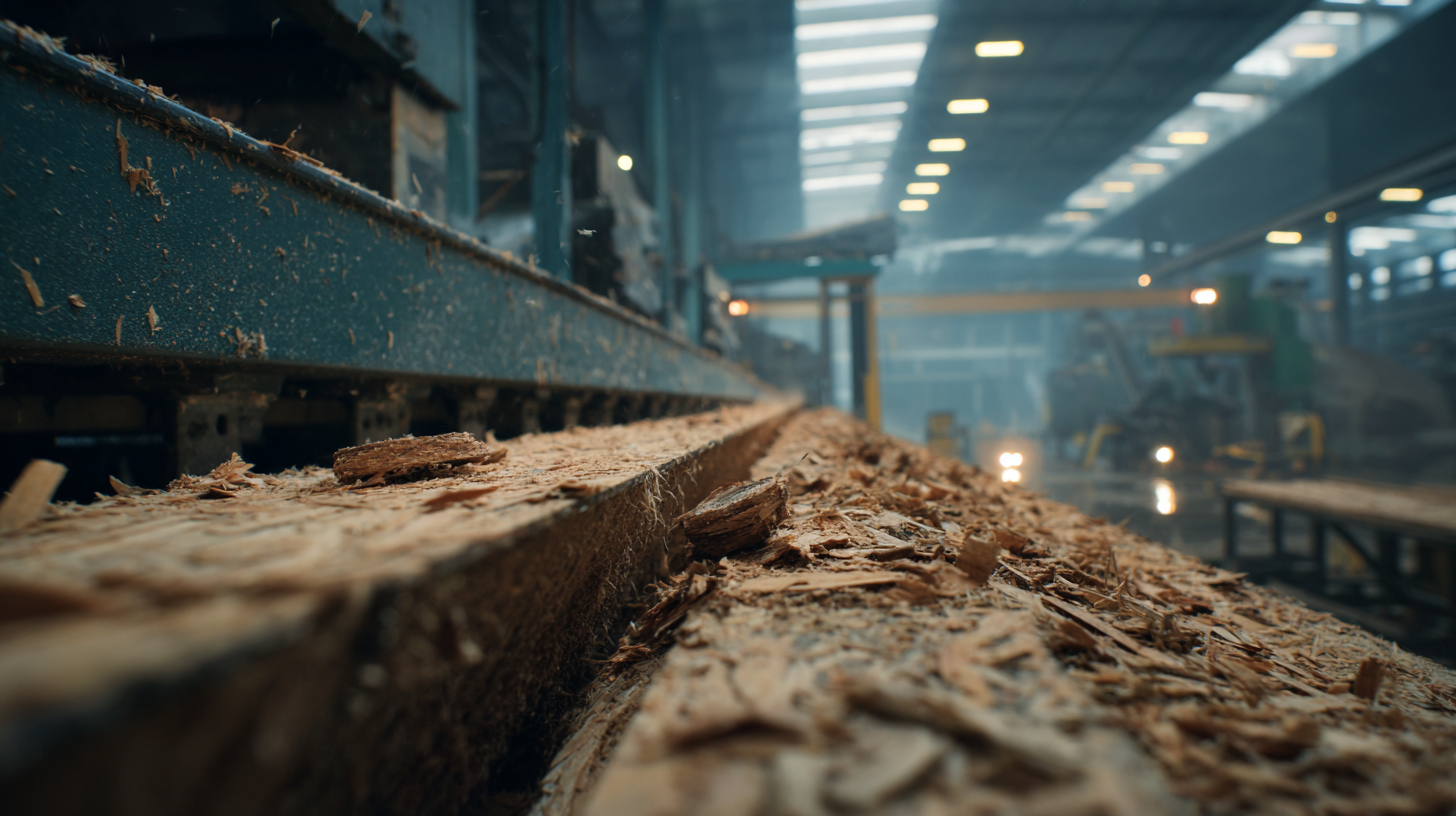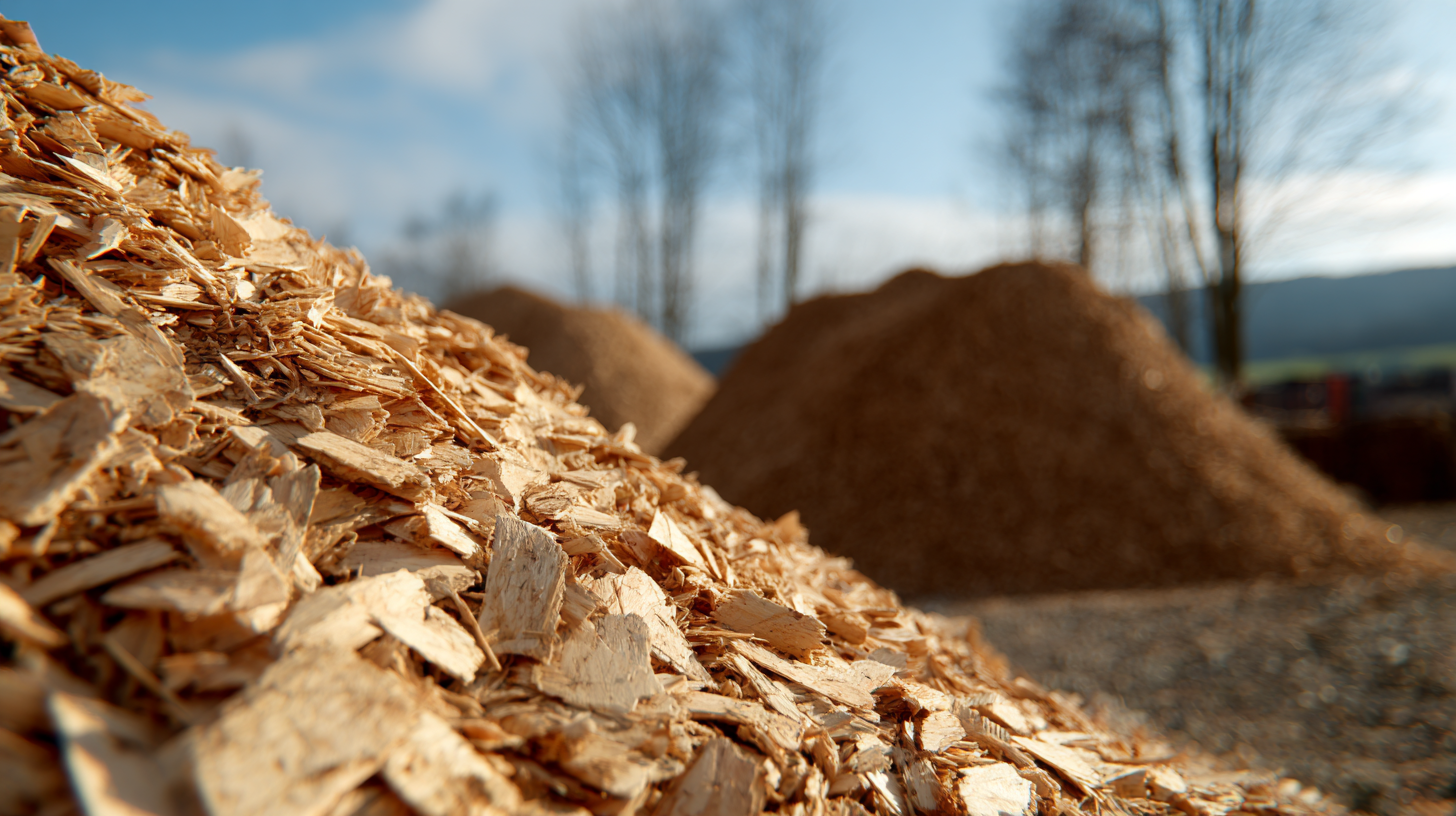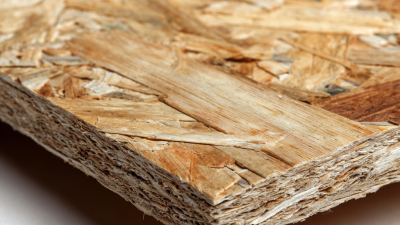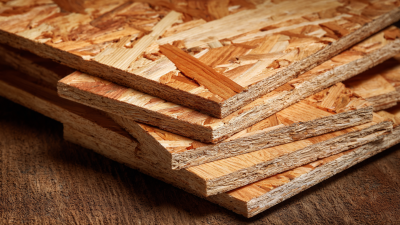In the modern construction landscape, the significance of quality control in Oriented Strand Board (OSB) manufacturing cannot be overstated. As an essential building material, OSB's performance influences the durability and reliability of structures. Recent industry reports indicate that approximately 70% of construction professionals consider panel quality as a critical factor in ensuring long-term stability and resilience of buildings (Wood Product Manufacturing Association, 2022). The role of an OSB manufacturer extends beyond mere production; it encompasses stringent quality assurance protocols that can mitigate issues related to moisture resistance and thermal performance. Further statistics highlight that high-quality OSB can reduce the likelihood of post-installation failures by over 30%, making quality control not just a manufacturing necessity but a pivotal aspect of construction safety and standards. Through comprehensive quality management systems, OSB manufacturers can uphold the integrity of their products, ultimately influencing the longevity and overall success of construction projects.

Quality control plays a vital role in the manufacturing processes of oriented strand board (OSB), particularly in ensuring the performance and reliability of the final product. Effective quality control measures are essential for maintaining uniformity in the material's properties, which directly impacts the strength and durability of structures built with OSB. Recent advancements in the industry have highlighted the significance of using precise materials that adhere to sustainability and performance requirements. For instance, manufacturers now prioritize products that offer super accuracy and sustainability, ensuring that the OSB meets stringent construction standards.

In addition to traditional wood-based materials, the exploration of alternative composites, such as bamboo-based materials, underscores the potential for innovation in the OSB manufacturing sector. Research on bamboo bonding reveals significant insights into how these materials can complement or enhance the performance of OSB products. By integrating quality control methodologies, manufacturers can better assess the bonding characteristics of both wood and alternative composites, ultimately leading to improved material performance and longevity. Robust quality assurance practices not only ensure compliance with industry standards but also foster the development of sustainable building solutions that cater to modern construction needs.
Quality control in oriented strand board (OSB) production is essential for ensuring the durability and performance of construction materials. One of the key elements involves rigorous testing of raw materials, where factors such as moisture content and strand quality are assessed to guarantee the optimal characteristics of the final product. By maintaining high standards for the wood strands used, manufacturers can prevent issues related to structural integrity that may arise from inferior materials.
Another critical aspect of quality control includes the monitoring of the manufacturing process itself. This involves implementing standardized operating procedures and real-time inspections to ensure that products meet specified tolerances and performance criteria. Quality control measures, such as the use of advanced technology for monitoring pressing temperatures and times, help to produce OSB panels that have consistent strength and reliability. As a result, a thorough quality control system not only enhances the functionality of OSB in construction but also extends the lifespan of the structures built with these materials.
Quality control plays a crucial role in the manufacturing of oriented strand board (OSB), significantly influencing its performance and reliability in construction. Recent developments have highlighted the effectiveness of premium OSB products, with many professionals opting for high-quality materials to ensure structural integrity. For instance, a loft conversion specialist reported impressive results using a specific OSB brand known for its value and ease of use. Such endorsements reflect a growing awareness among builders about the importance of quality control in guaranteeing that the materials used in construction meet stringent performance standards.
Tips for selecting quality OSB include checking for certifications and performance ratings that signify adherence to industry standards. Additionally, consider the manufacturer's reputation and history of quality assurance processes. A reliable OSB should also demonstrate moisture resistance and dimensional stability, which are vital for long-term durability in varied construction applications.
Understanding these factors can significantly impact construction outcomes, ensuring that the structures built are not only functional but also durable. Investing in quality OSB ultimately leads to more reliable and resilient buildings, making it a worthwhile consideration for any construction project.
This chart illustrates the various quality control metrics measured in the production of oriented strand board (OSB). Each metric represents a crucial aspect of OSB quality, which directly impacts its reliability and performance in construction applications.
Oriented Strand Board (OSB) plays a vital role in modern construction, and the quality of OSB directly influences the durability of structures. High-quality OSB is manufactured under stringent quality control processes, ensuring consistent material properties that resist environmental stressors. Over time, inferior OSB can lead to structural problems such as warping, swelling, and reduced load-bearing capacity. These issues not only compromise the integrity of the building but also incur additional repair costs and extend construction timelines.
The long-term effects of OSB quality are particularly significant when considering moisture resistance and bonding strength. Properly engineered OSB can withstand fluctuations in humidity and temperature, maintaining its performance over decades. In contrast, lower quality boards may succumb to mold growth and rotting, particularly in regions with high moisture levels. Therefore, investing in quality OSB is paramount, as it enhances the life cycle of construction projects, ensuring safety and reliability while minimizing future maintenance challenges.

Quality control (QC) is essential in the manufacturing of oriented strand board (OSB), directly influencing the durability of the final product. To enhance quality control practices, adopting advanced tools is crucial. Implementing Quality Management Systems (QMS) and integrating Statistical Process Control (SPC) can significantly reduce defects and ensure compliance with industry standards. These methodologies allow for continuous monitoring and improvement of manufacturing processes, fostering a culture of quality that is vital for producing durable OSB.
Furthermore, creating a positive work environment is key to boosting employee motivation, which in turn affects quality control practices. When workers feel valued and experience a supportive workplace, they are more likely to adhere to quality standards and engage actively in QC processes. Training programs that emphasize best practices, combined with modern technologies like machine learning for process monitoring, can effectively improve productivity and quality outcomes in OSB manufacturing. By focusing on these aspects, manufacturers can enhance their quality assurance protocols, leading to stronger and more resilient construction materials.
| Quality Control Aspect | Measurement Criteria | Best Practice Examples | Impact on Durability |
|---|---|---|---|
| Raw Material Inspection | Moisture Content, Density | Regular supplier audits, material testing | Ensures structural integrity |
| Manufacturing Process | Temperature, Pressure, Time | Process monitoring systems, operator training | Prevents delamination and warping |
| Product Testing | Bending Strength, Thickness Swelling | Routine lab tests, quality certifications | Improves longevity and safety |
| Final Inspection | Visual and Dimensional Checks | Standardized checklists, employee training | Reduces failures in field applications |
| Feedback Loop | Customer Reports, Warranty Claims | Customer surveys, quality improvement teams | Enhances product reliability and reputation |






